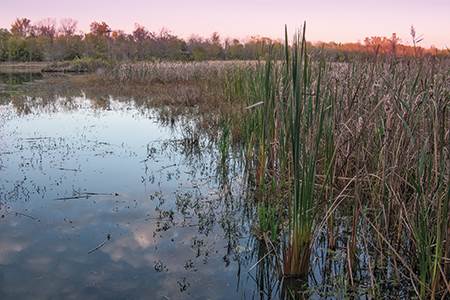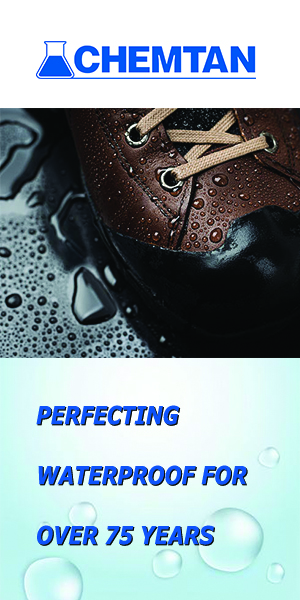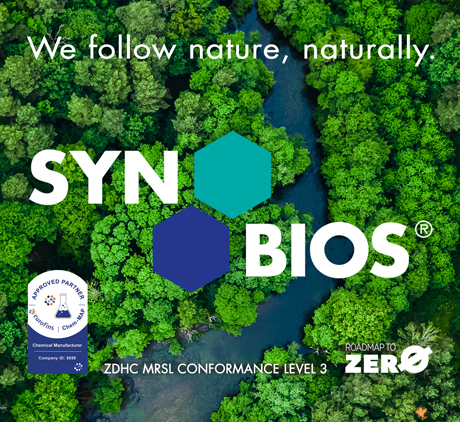Water-positive

Luxury group Kering has released the first details of a new water strategy. It wants to move beyond just reducing the consumption of water that production of its collections entails. Its aim is to “restore, regenerate and transform” water cycles in ten hotspots around the world.
Luxury group Kering has announced a new water strategy. It says launching this dedicated policy on water, its Water-Positive Strategy, is “a pivotal stage” in a wider science-backed approach to sustainability. The new strategy consists of three key programmes through which it will aim to deliver “on-the-ground transformation and water-positive outcomes”.
Because water is “fundamental to the global economy” and to human survival, Kering says it wants to go beyond reducing the volume of water it and its suppliers consume. It wants to set up projects that will help restore water cycles and ecosystems. It wants to achieve “water-positive impacts”, actions that will improve the quality, quantity and accessibility of water in ten priority, ‘hotspot’ regions. So far it has only said exactly where the first of these ten hotspots will be but it has specified the ten countries. They are Peru, Argentina, South Africa, France, Spain, Italy, Mongolia, Australia, Turkey and India.
Watershed events
The first of the three programmes is one that will aim to concentrate the group’s sourcing strategies on materials that can “alleviate pressures on nature and water”. Production of the leather Kering uses in bags for Bottega Veneta, Gucci and other brands is at the heart of this, although its focus will also be on recycled fabrics and “innovative alternatives”.
This will include increasing the volume of materials deriving from regenerative agriculture, which, the group explains, will help reduce pollution and replenish watersheds. Watersheds are areas of land on which rain or snow collect and run from there into a lake, river or sea. In many parts of the world, climate change, with long periods of drought and unpredictable rainfall, has degraded soil in watersheds and harmed communities’ ability to grow food crops and, therefore, to live. All too frequently, floods are also a threat to life.
Non-profit group the Stockholm International Water Institute (SIWI) says governments have learned the hard way that projects to repair watersheds are of great importance. In 2017, in Peru, one of the ten Kering hotspots, floods and landslides killed 138 people and made 700,000 people homeless. The government accepted the need to restore watersheds in the areas affected. Many coastal regions suffered, with the Moche watershed near Trujillo, the country’s third-largest city, among the worst hit.
The government spent $1.5 billion on “strengthening the resilience of affected watersheds”, SIWI says. This investment focused on infrastructure, repairing defences, improving flood control and putting early-alert systems in place. Other investment has followed in what SIWI refers to as “nature-based solutions to reduce water and climate risks”. This has included the reforestation of 45,000 hectares of land.
Last year, the Food and Agriculture Organisation (FAO) of the United Nations secured funding for watershed projects in seven countries in the Americas. They will work together to address the water security of 12 large watersheds. The aim is for this to improve the management of 1.8 million hectares of protected areas and restore 300 hectares of wetlands, which will directly benefit 350,000 people.
Home truths
Water concerns of a different kind came to Kering’s home city, Paris, when it hosted the 2024 Olympic Games. One of the many stories that attracted global attention was the effort the authorities had gone to to make the River Seine suitable for some of the swimming events. Financial media outlet Bloomberg said that the clean-up programme had cost €1.4 billion over nine years in the lead-up to the Olympics. Water-quality tests led to last-minute cancellations of important training sessions in the river for competitions including the triathlon and marathon swimming. In the end, athletes did swim in the Seine, although there were high-profile instances of illness among the participants afterwards. River swimming had been banned in the French capital since 1923.
A legacy of the Olympics and of the years of preparatory work and investment, plus some post-Games remedial work, is that Parisians have been able to swim in the river at three designated points since July 5, until August 31, this year. The United Nations Environment Programme (UNEP) has called the Seine clean-up programme a success story and has urged other cities and national governments around the world to follow in Paris’s wake. This is a message UNEP has been communicating for years. The summer before the Paris Olympics, it supported endurance athlete Lewis Pugh in his swim of the Hudson River. He swam the 517-kilometre length of the river, from the Adirondacks to New York Harbour (wearing a UNEP swimming cap) to raise awareness of rivers’ vulnerability.
Supplier involvement
The Seine saga may have helped inspire Kering’s Water-Positive Strategy, but the first watershed on which it aims to make a water-positive impact is that of the River Arno in Tuscany. This ties in with the second of the three programmes that make up the strategy; Kering is committed to working with strategic suppliers to tackle shared challenges. This part of Italy is home to one of the most important leather-manufacturing communities in the world.
Italy’s national tanning industry association, UNIC, says the towns of Santa Croce, Castelfranco di Sotto, Montopoli, San Miniato, Bientina, Santa Maria a Monte and Fucecchio are home, collectively, to the largest number of tanneries in Italy. They specialise in making high-quality leather from calfskins and small- and medium-sized bovine hides, serving high-end leathergoods brands in Italy, France and elsewhere, including Kering’s. Together, the Tuscan tanneries account for nearly 30% of the entire turnover of the Italian leather industry. Like the major cities of Florence and Pisa, some of these towns are on the banks of the Arno; none is more than a few kilometres from the river.
Suppliers there will play their part in turning the Kering strategy into reality. They will do this by favouring the use of chrome-free and “low-impact tanning agents” in their production set-ups, the group has said. Its conviction is that these leather chemicals will help increase water efficiency inside the tanneries and improve water availability and water quality in the communities in the Arno watershed. This spreads across an area of more than 8,000 square-kilometres.
Increased efficiencies inside the Tuscan tanneries will deliver, by 2030, a reduction of 20% in the water withdrawal in the Arno basin of facilities the group owns there. It will roll out similar innovation programmes in other parts of the world and, by 2035, will achieve a reduction of 35% in the water withdrawal of all group tanneries.
Lab work
The third strand of the Water-Positive Strategy will be a programme of new, dedicated water-resilience labs. The group has said it will set one of these up in each of the ten priority areas by 2035, in partnership with regional stakeholders, suppliers, other companies, local communities, and public authorities. Tuscany, again, will be the first of the ten to open its lab, this autumn.
According to Kering, the water-resilience labs will encourage innovation and work to join up the “isolated efforts” of different stakeholders to “create momentum for a water-positive paradigm shift”. They will seek to set common goals and common metrics to show progress. Water challenges are global, the strategy says, but solutions to those challenges must be local and collaborative. The labs will serve as a cornerstone of the commitment to water resilience, promoting collective action and creating lasting positive impact.
The group’s chief sustainability officer, Marie-Claire Daveu, says: “It is crucial that water commitments evolve from a ‘reduction-only’ approach to become water-positive, regenerating and replenishing water and ecosystems associated with all business activities.” She adds that Kering’s new strategy will be transformative, and will deliver “measurable water-positive outcomes to enhance social, environmental and economic resilience, and contribute to building up the availability of clean water for all”.
A watershed near Edwardsville, Illinois.
Credit: Roberto Valz/Shutterstock






























